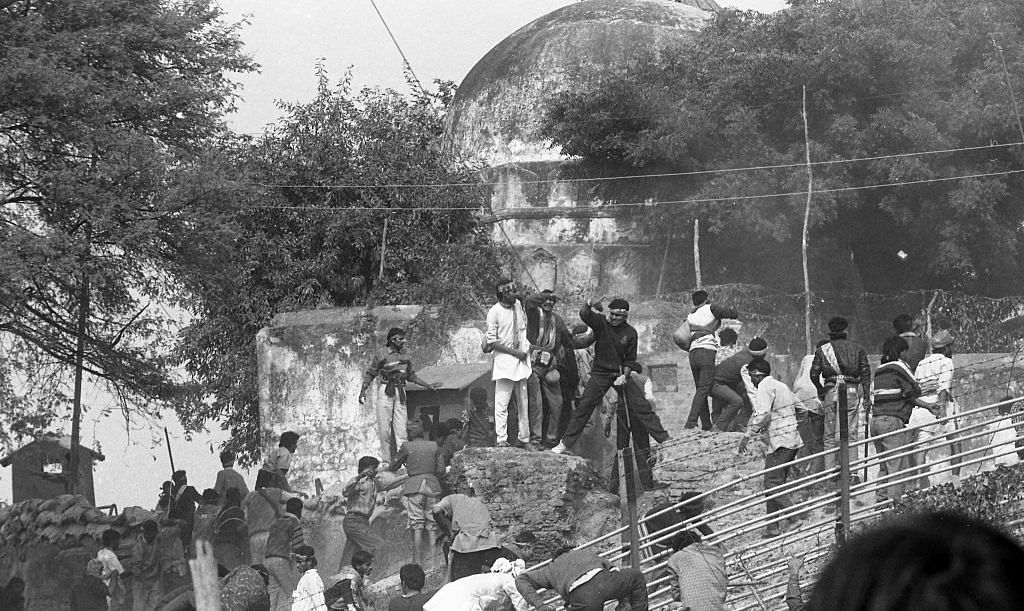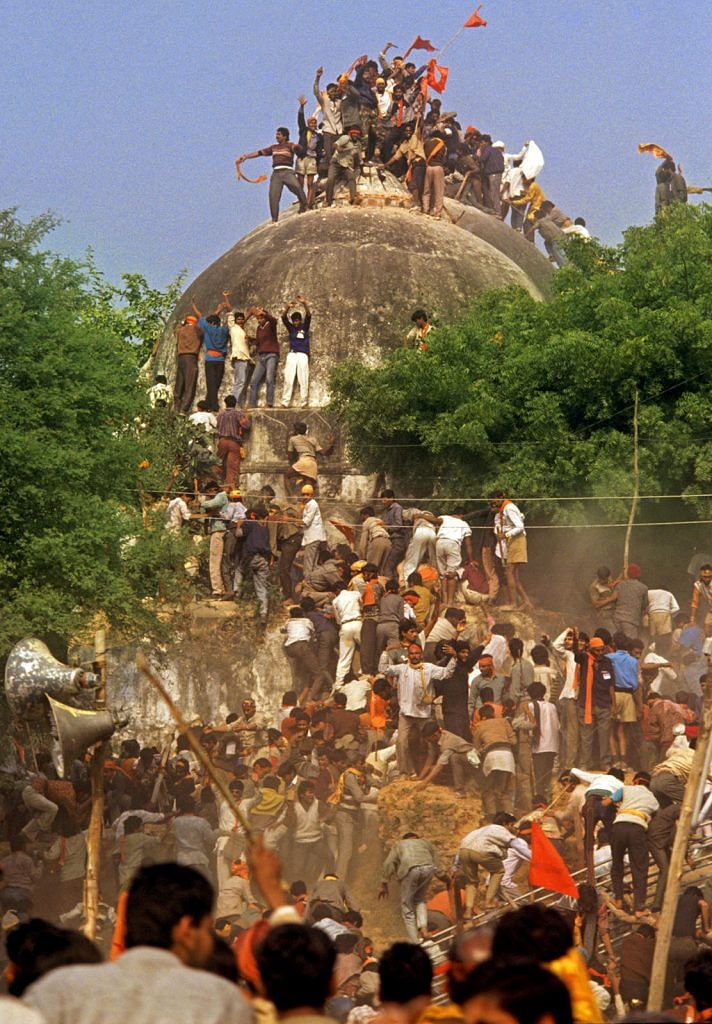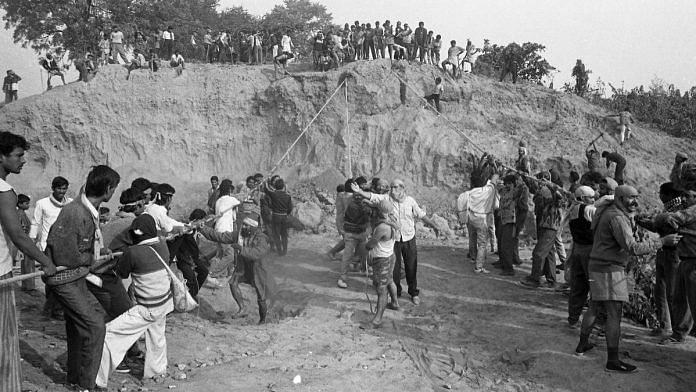They recall the larger picture, but say they are fuzzy on the details, a fact they fear will be used by the defence to discredit their account.
New Delhi: They live with the horrors of that cold December day in 1992 even today, but photographers who covered the Babri masjid demolition have been stumped by the CBI’s invitation to depose as witnesses 26 years later.
They recall the larger picture, the atmosphere of hysteria laid bare in their photographs, but say they are fuzzy on the details, a fact they fear will be used by the defence to doubt their account.
Praveen Jain, who covered the 6 December 1992 demolition for The Pioneer, will take the stand as a prosecution witness before additional district magistrate S.K. Yadav at a Lucknow court this week.

According to Jain, he reached Ayodhya two days before the demolition after a tip-off from a “senior Vishwa Hindu Parishad (VHP) official”. To this day, the scenes that followed play in his mind like a video on loop, Jain said.
“The VHP official… had even invited me for the ‘rehearsal’ the day before, on 5 December,” Jain told ThePrint.
By that evening, reporters and photographers from across the country had descended on Ayodhya, and Jain, who had attended the ‘rehearsal’, greeted them with a sombre warning. “I told everybody that the kar sevaks would not limit themselves to simply doing a puja as proposed, that the mosque would fall,” Jain said.
Nobody, he added, took him seriously at the time and his claims were laughed away. What happened the next morning is a sight immortalised for generations to come by the photographers on duty.
Kar sevaks, declaring their affiliation through saffron bandanas, scarves or flags, mounted the domes of the masjid by the dozen.
The ensuing onslaught saw the 16th century mosque built by the Mughal emperor Babar razed to the ground. The demolition triggered riots throughout the country, with nearly 2,000 people dying before the frenzy subsided.
However, Jain’s account, though vivid, is more in the nature of a storyteller’s, and he doubts he remembers enough 26 years on to be a solid witness.
“I was a material witness in the (Allahabad) high court trial (which ended in 2010) as well…the events of the day are seared in my mind, but, after 26 years, the finer points evade me,” he said.
The trial into the conspiracy behind the demolition has continued since 1992, but the Supreme Court, in April last year, set a two-year deadline for its completion.
In the same directive, the apex court had restored the conspiracy charges against BJP leaders L.K. Advani, Murli Manohar Joshi, and Uma Bharti, among others, undoing a 2010 Allahabad High Court order. Also, the two separate trials pertaining to the demolition – one against unnamed kar sevaks and the other against political leaders – were clubbed together.
‘A sham’
Two photographers who have already deposed in the ongoing trial returned unimpressed.
“The whole thing is a sham,” said photographer Sanjay Sharma, who covered the demolition for Hindustan Times. “I am very disappointed with the system…in my statement, I recounted all the events to the best of my abilities, including all the names I could remember. However, the CBI lawyer asked me to play dumb, saying I would otherwise have to keep returning to depose again and again,” he alleged.
Prashant Panjiar, who was covering Advani’s rath yatra (which concluded in a public rally in Lucknow on 5 December) for India Today, said the environment was “very hostile” during his deposition.
“The defence lawyers kept trying to trip me up,” he said. “Even the recording of my statement was different from what I was saying in court. This was rectified only after I complained to the judge,” Panjiar said.
He added that the entire system of recording statements was flawed, saying “it sort of allows the defence to manipulate the answers from the witness to go a particular way”.
Some prefer to stay away
Other photographers who were summoned, meanwhile, have decided to dodge the trial altogether.
Independent photographer Nitin Rai, who covered the demolition for Sunday magazine, said he had “prior commitments”.
“I booked my tickets to go once, but at the time the judge wasn’t there and the trial got postponed. The CBI called me once again, but I cannot go due to prior commitments,” he added.

Even so, Rai echoed Jain’s concerns in questioning the exercise.
“I don’t see the point of giving my testimony now. Telling stories is one thing, but testifying in the court of law is another,” he said. “It’s been so many years, I remember the kar sevaks thrashing photographers and exposing the film after we shot the demolition. They wore the exposed film as bandanas. But it is the finer points that escape me,” Rai added.
Some of his colleagues, meanwhile, have chosen to ignore the summons altogether. Refusing to be identified, these photographers said they did not want to get into this “legal mess”.






